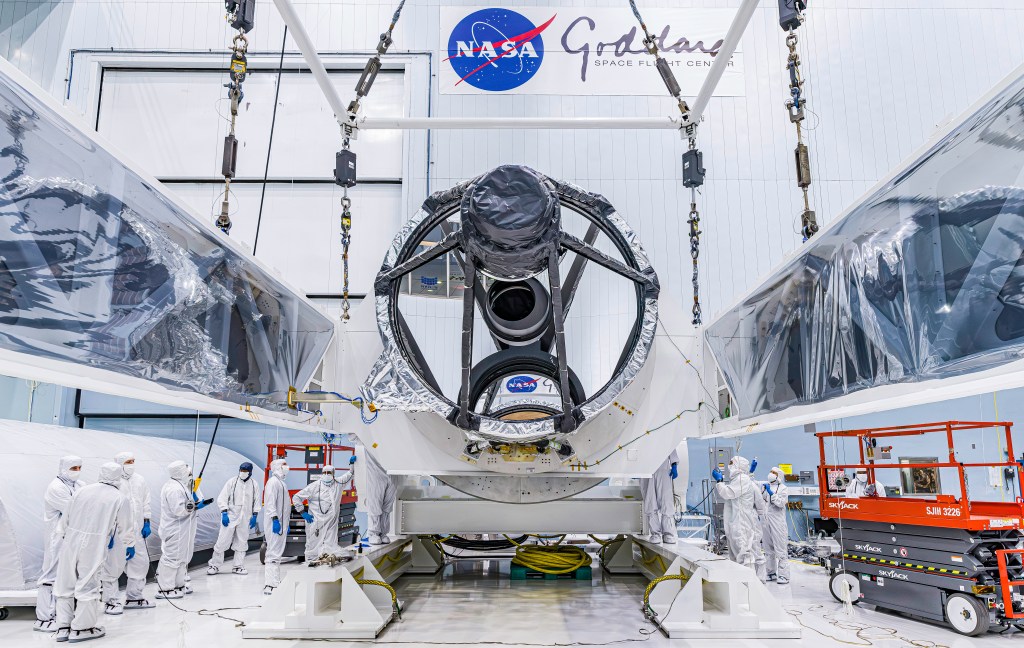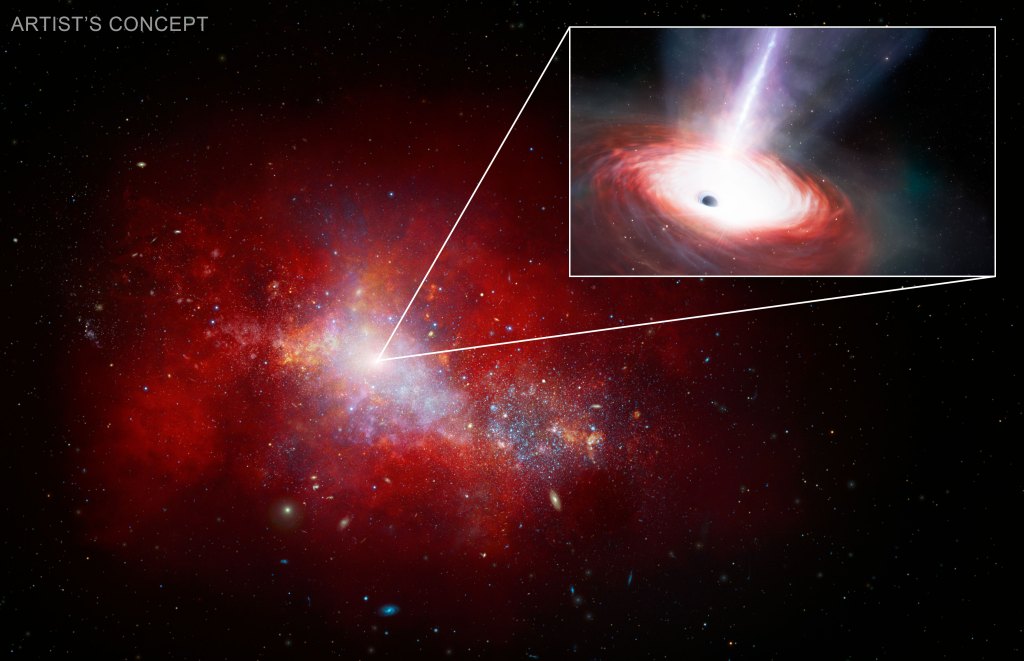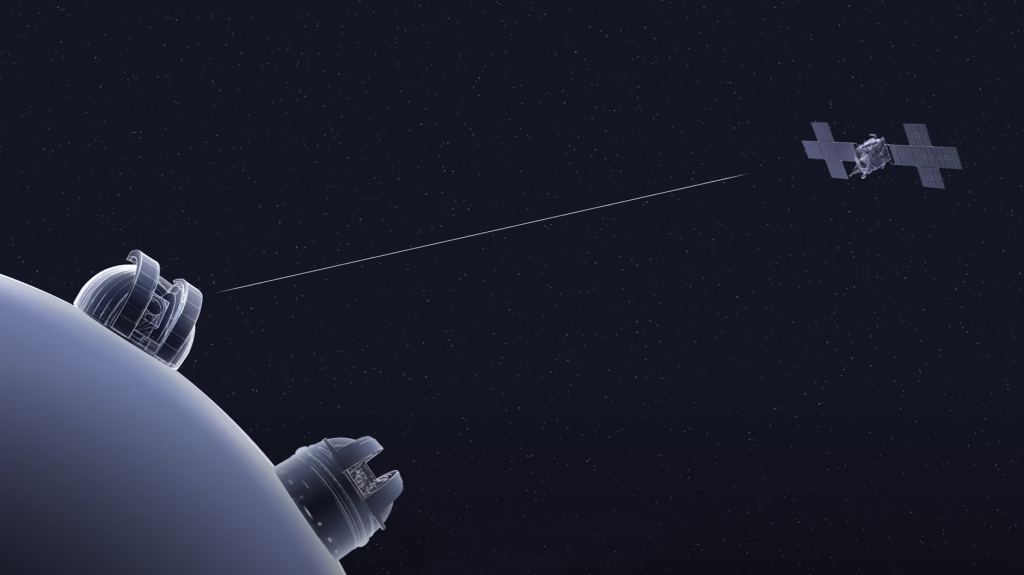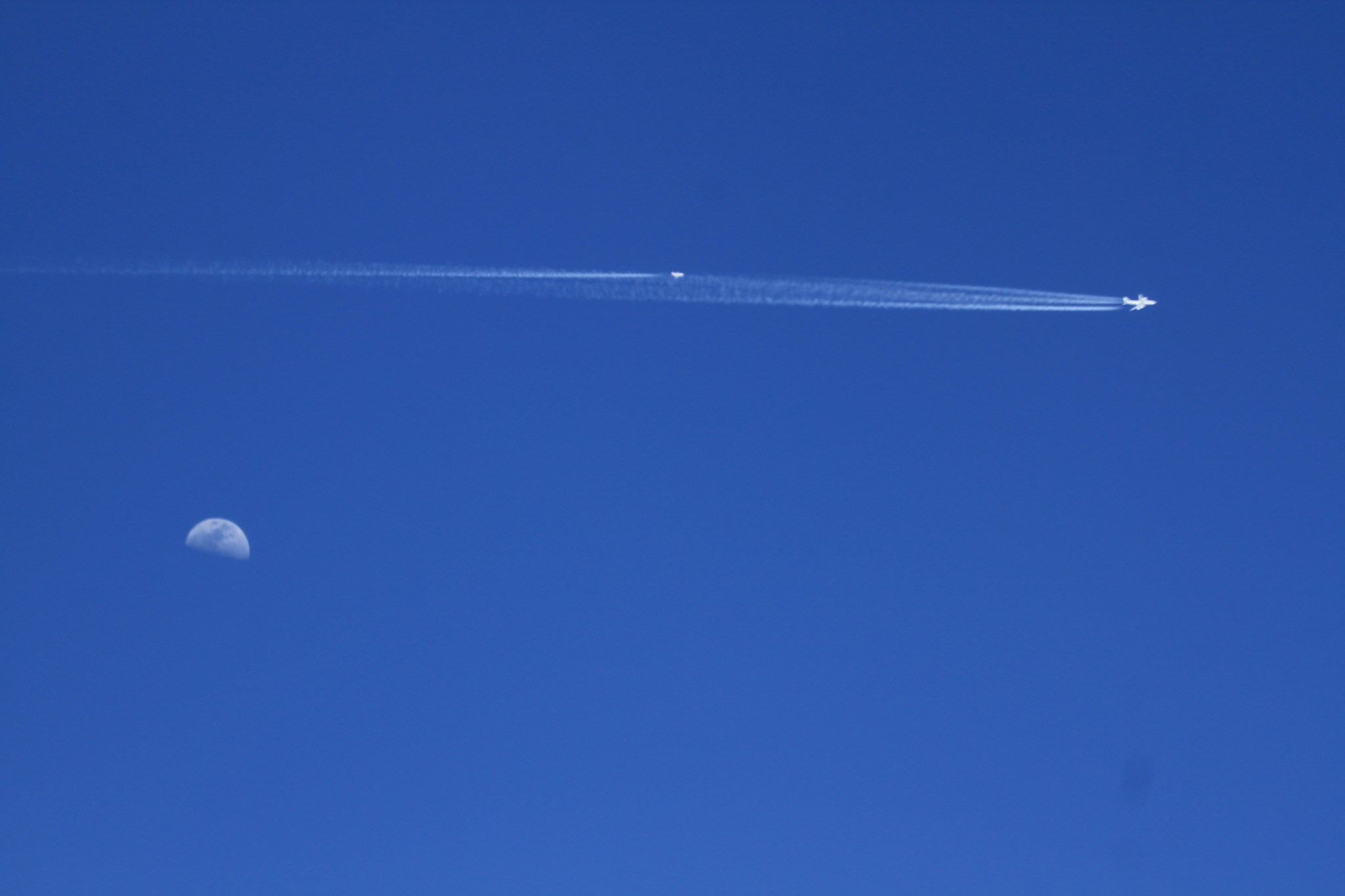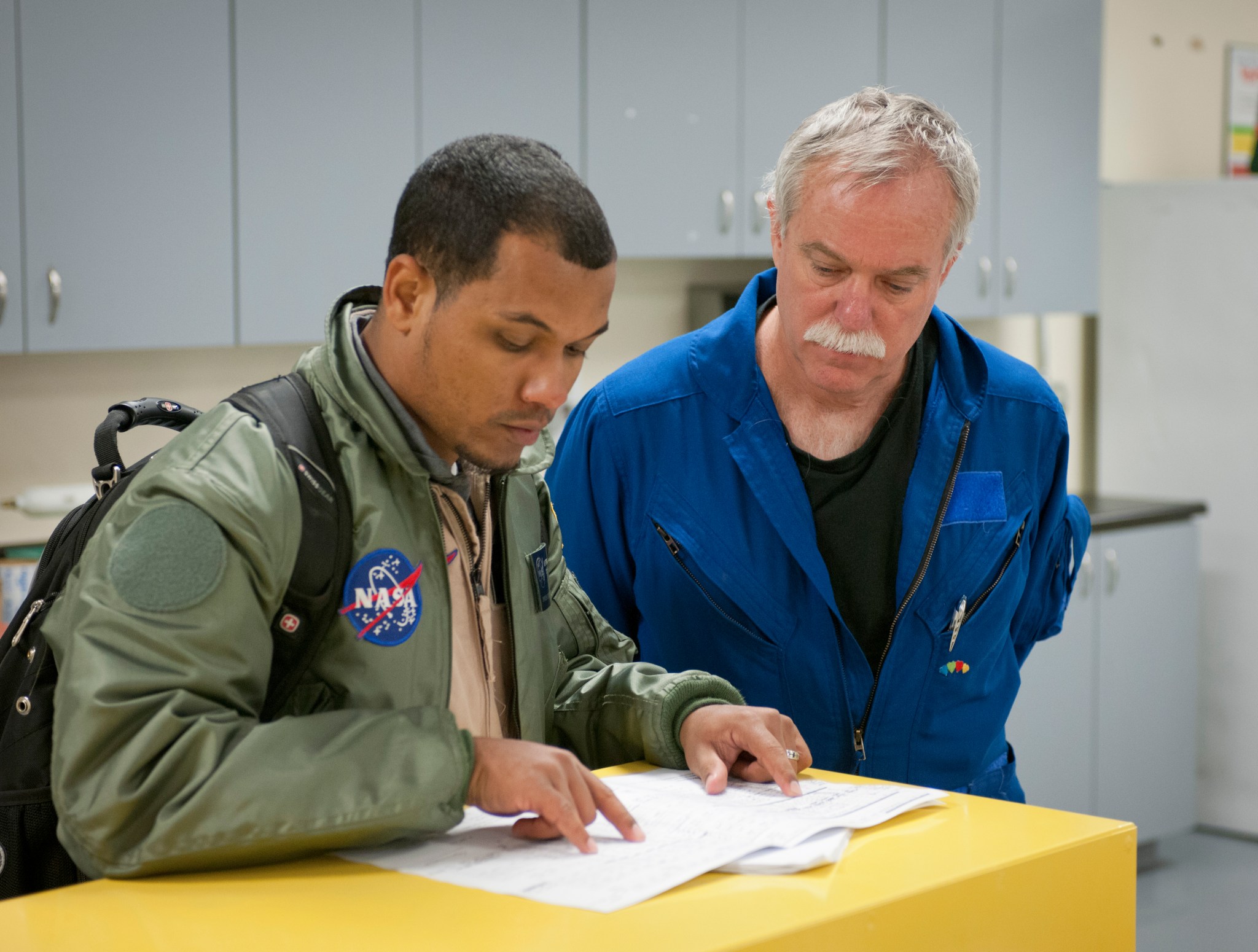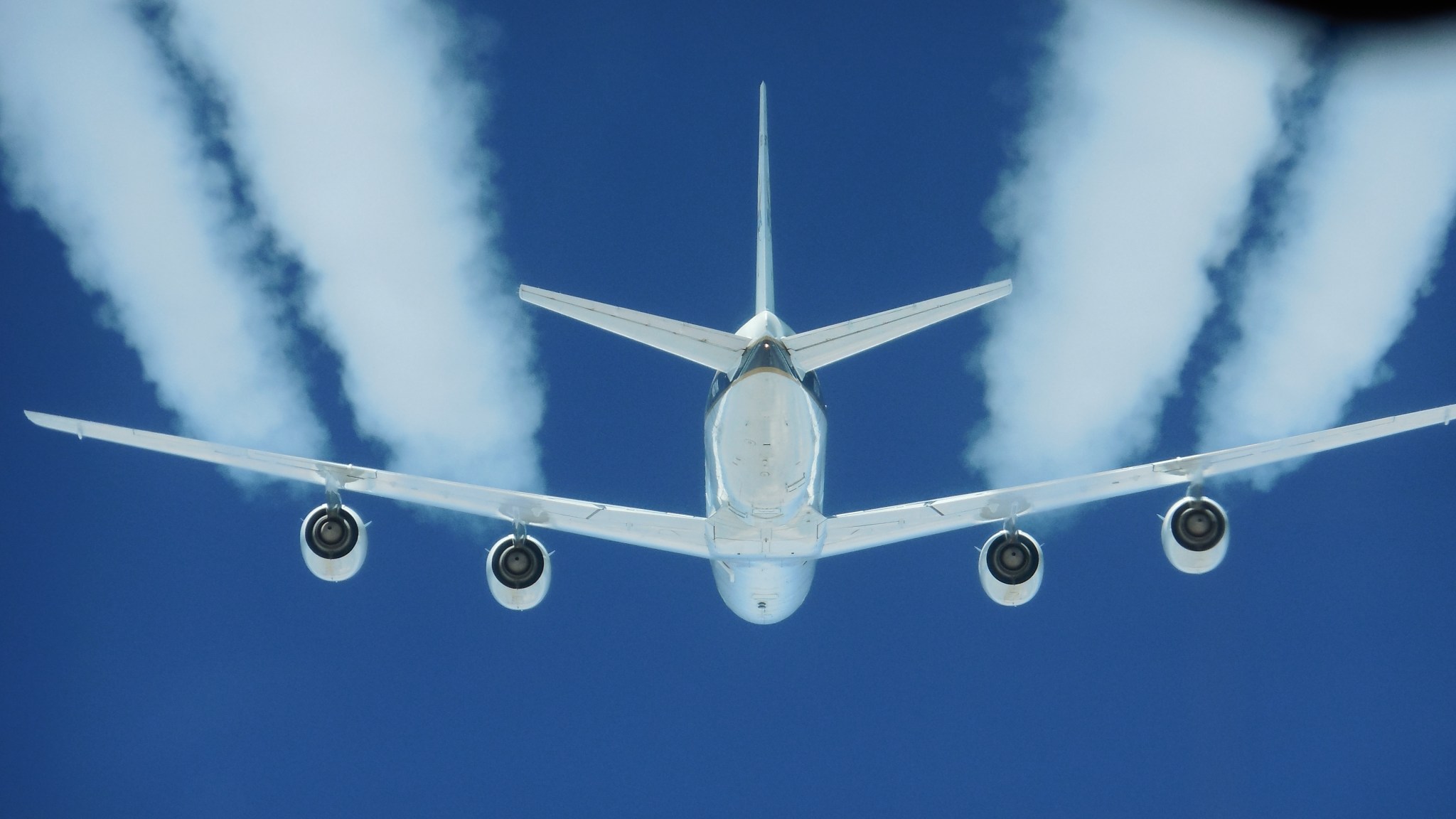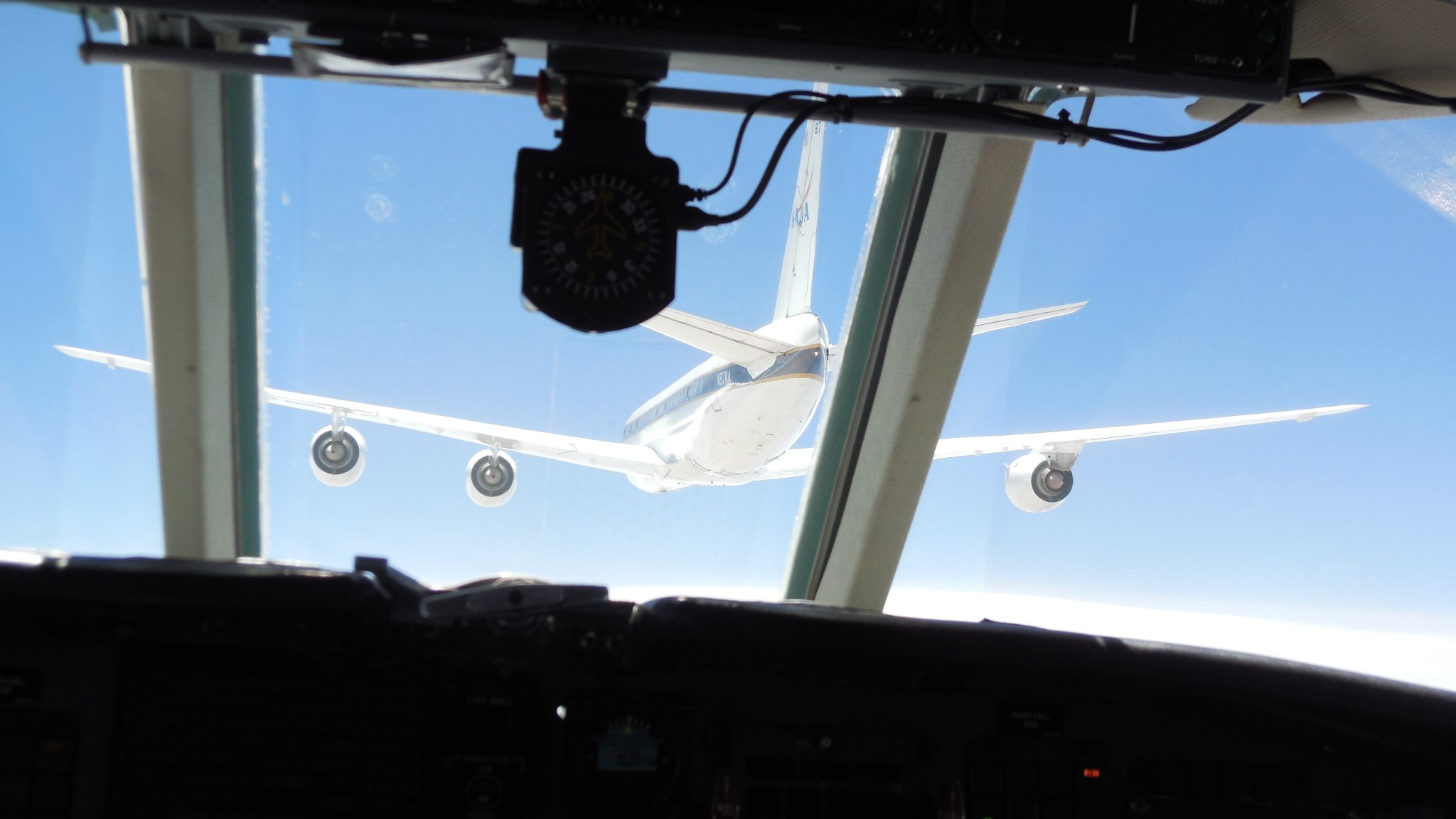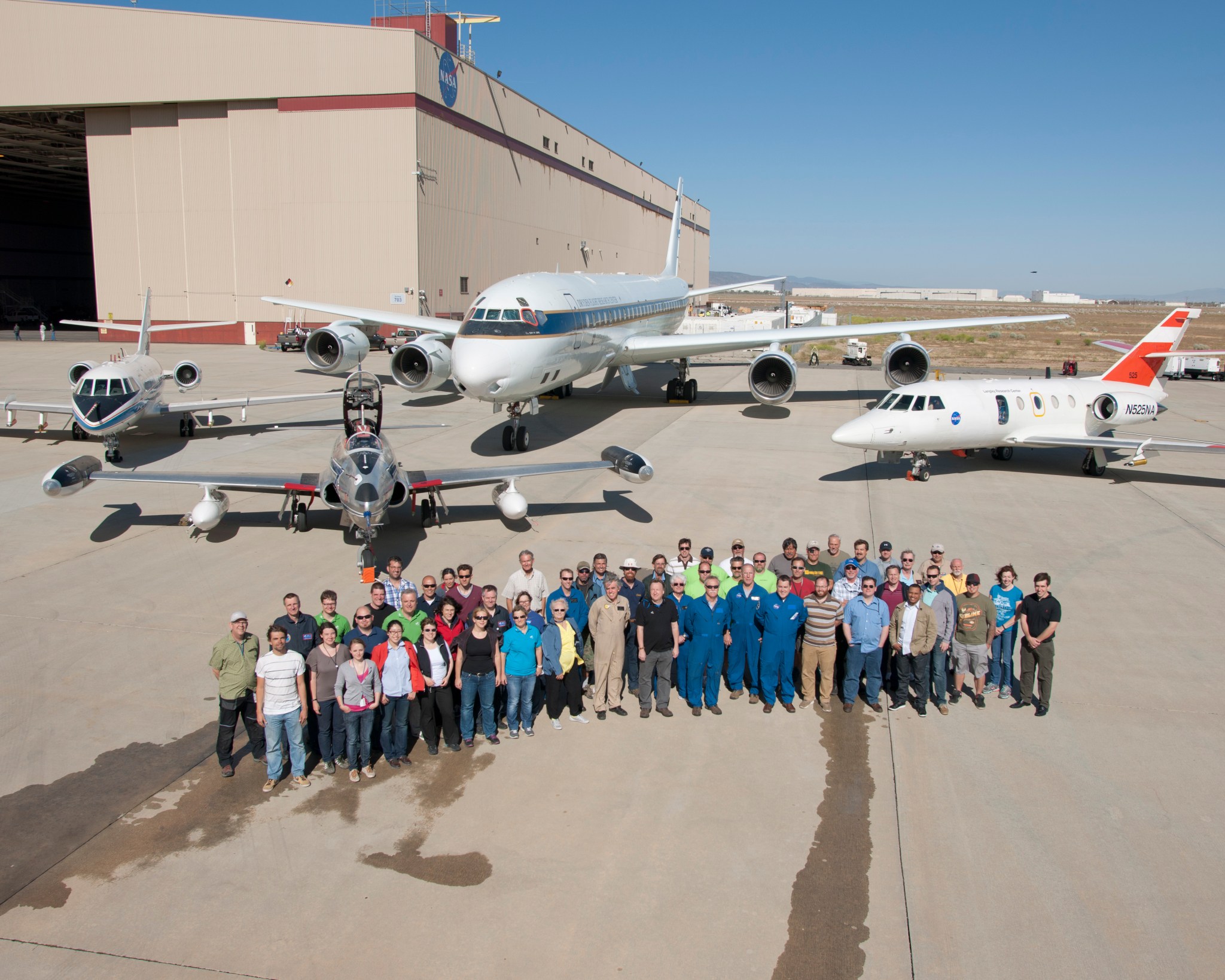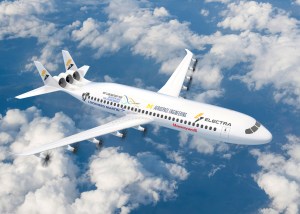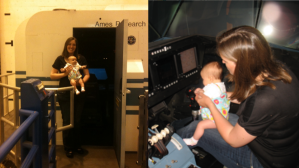Flying high above the California desert, NASA researchers recently took to the skies for the second year in a row with a DC-8 and other aircraft to study the effects on emissions and contrail formation of burning alternative fuels in jet engines.
This follow-up set of Alternative Fuel Effects on Contrails and Cruise Emissions flight tests, known as ACCESS II, repeated a similar series of tests flown during 2013, while also adding a few new wrinkles to the investigations to capture more and better data. Within NASA, ACCESS II was a joint project involving researchers at the Armstrong, Langley, and Glenn research centers. The research supports NASA aeronautics’ strategic vision, which has as a goal to enable transition of industry to low-carbon fuels and alternative propulsion systems.
“It went well,” said Bruce Anderson, NASA’s principal investigator for ACCESS. “We got beaucoup of data!”
A quick look at the ACCESS II data confirmed with high certainty the results from ACCESS I, which showed at least a 50 percent reduction in soot emissions from the DC-8 when it burns the blended fuel as opposed to the jet fuel alone, Anderson said.
It is hoped the research will help lead to more environmentally friendly aircraft designs and worldwide flight operations, especially in light of the explosive growth in global air travel that is forecast for the decades ahead.
ACCESS II involved flying NASA’s workhorse DC-8 as high as 40,000 feet while its four CFM56 engines burned either JP-8 jet fuel, or a 50-50 blend of JP-8 and renewable alternative fuel of hydro processed esters and fatty acids produced from camelina plant oil.
Meanwhile, a trio of instrumented research aircraft took turns flying behind the DC-8 at distances ranging from 300 feet to more than 20 miles in order to take measurements on emissions and study contrail formation as the different fuels were burned.
The trailing aircraft included NASA’s HU-25C Guardian jet based at NASA’s Langley Research Center in Virginia, a Falcon 20-E5 jet owned by the German Aerospace Center, and a CT-133 jet provided by the National Research Council of Canada.
ACCESS II’s international flavor – a new plot element compared to ACCESS I in 2013 – definitely added value to the research and has already opened doors for possible future collaborations for this type of scientific inquiry.
“We developed a very good working relationship,” Anderson said.
As part of the international team involved with this research, NASA will share its findings with the 24 member nations that make up the International Forum for Aviation Research, which NASA currently chairs.
ACCESS II Mission Timeline
Flight tests were staged from NASA’s Armstrong Aircraft Operations Facility in Palmdale, Calif., and mostly took place within restricted airspace high over nearby Edwards Air Force Base.
They began May 7 with all four aircraft in the air to verify the test plan, capture some in-flight photos and take a set of data from the DC-8 as it burned only standard jet fuel. Three more flight sorties with all aircraft participating followed on subsequent days, this time using the blended fuel.
On May 12 a fifth data run was aborted when the two outboard engines of the four-engine DC-8 flamed out. The DC-8 easily returned for a landing on its two remaining engines, grounding the science gathering mission for 10 days while the incident was investigated and the problem corrected.
It turned out the trouble was caused by a tiny pocket of air introduced into the propulsion plumbing when a sample of fuel was taken on the ground before takeoff. The air worked its way into a fuel pump that was feeding all four engines, causing two of them to be starved for gas long enough to flame out.
“It had nothing to do with the blended fuel we were using, just the way the system was configured in combination with the air in the line,” Anderson said.
A change in procedures fixed the trouble and flight tests with the DC-8 and the NASA research jet resumed on May 22, the German and Canadian aircraft having departed for their home bases – but not before the NASA and German jets spent a day chasing each other to study contrail formation.
Four more research flights took place testing the blended fuel through May 30, which was the last day of ACCESS II test operations.
Mission Success
ACCESS II had two main goals:
- Measure and characterize the amount of soot and other pollutants generated by burning jet fuel (with either high or low sulfur content) that was blended with alternate biofuel.
- Gather basic data on contrail formation in the wake of a jet aircraft and study how or if burning blended fuel altered the contrail formation in any way.
Both goals were achieved to a much greater degree than ACCESS I in 2013, although Anderson said weather conditions were not as cooperative for contrail formation as often as the science team would have liked.
“We certainly could have used more contrail observations,” Anderson said. “But we did make many more observations of contrails than we did before, and I think we obtained the first data that will allow us to calculate how many ice particles are formed per kilogram of fuel burned.”
The next step would be to correlate that data to the number of soot particles coming out of the exhaust, which could help determine if the blended biofuel would be a factor in reducing contrail formation. That analysis isn’t complete yet, but Anderson is confident they have enough data to make a good stab at answering that question.
In the meantime, it is more certain than ever that the blended biofuel is cleaner to burn.
“Our findings show we definitely see a 50 percent reduction in soot emissions from the DC-8 when it burns the blended fuel as opposed to the jet fuel alone,” Anderson said, noting that while ACCESS I showed similar results, the quality of data obtained during ACCESS II was far superior.
One reason for the improved data set was the result of extensive safety reviews that came following ACCESS I, which led to allowing the NASA Guardian jet greater flexibility in where it could fly behind the DC-8 to gather data during ACCESS II.
An example of this was the option of flying through the DC-8’s wake vortices, a turbulent swirl of air that airplanes – especially big ones – trail behind for miles.
By flying through the DC-8’s wake the science instruments on the chase aircraft were able to record more data about how the emissions mixed with air. And even at a distance of 15 miles the experience was no walk in the park.
“It was something like a roller coaster at times as we were twisted one way or another, that’s for sure,” Anderson said. “And yes, it was a good idea to keep the airsickness bags handy.”
Ahead: Another ACCESS?
According to Anderson, for the moment they are concentrating on analyzing the large amount of data collected from both the ACCESS I and II campaigns, so there are no concrete plans yet for another NASA-led flight campaign. Instead, NASA researchers and management continue to discuss potential future collaborative efforts that could lead to further flight campaigns.
In the meantime, Anderson is hopeful his team will be able to conduct a mission that will look more directly at how contrails grow and transition into cirrus clouds, which are known to both trap and reflect different wavelengths of energy – a variable in discussions about climate change.
“It’s generally believed that contrails warm the environment but there’s a lot of questions regarding just how much heating and cooling are going on. But our job is to make the best measurements of contrails and background conditions possible and hand that data off to the climate modelers to chew on. In that regard, I think we certainly fulfilled our responsibilities during ACCESS,” Anderson said.
















